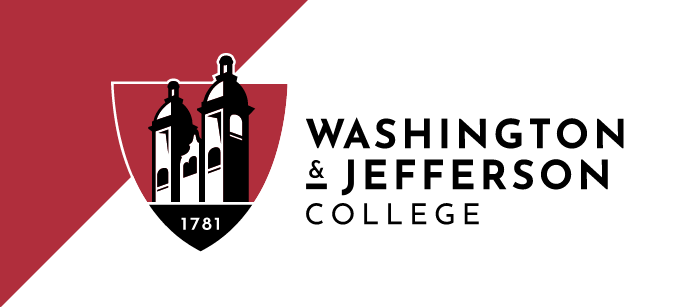WASHINGTON, PA (Jan. 20, 2014) – A new Intersession course at Washington & Jefferson (W&J) College brings together technology and science to create a unique lab course applicable to students in nearly all majors.
Eye Tracking Methods, taught by Amanda Holland-Minkley, Ph.D., associate professor and chair of the Computing and Information Studies (CIS) Department at W&J, is an introduction to the technology and methods for using eye tracking to determine attention and usability when interacting with websites, software, games, mobile apps, images or videos.
The 14 students taking the course are in a variety of majors, including CIS, business, and political science, among others. The class is intensive – hours are from 9:30 to 11:30 a.m., then from 1 to 4 p.m., Monday through Friday – and involves a study of the scientific method, project development and implementation, and data collection.
Students are working with hardware and software designed for eye tracking, and are learning how to design research projects to ensure scientifically meaningful results. The course fulfills the lab requirement of the college’s general education curriculum.
One of the eye-tracking tests, “Snacks,” designed by senior business major David DiBenedetto, showed test participants sets of product packaging followed by unrelated images of animals. The test then asked participants to remember the product packaging, and record which design was most appealing.
Eye Tracking Methods is the first CIS class DiBenedetto has taken, and he said it will be helpful to him as he pursues a business career.
“My project is one about packaging and how packages appeal to consumers,” he said. “This is good to use for marketing. Someday I might have to use a study like this to test products.”
Other projects used similar methods, asking test participants to judge the value of a vehicle by its physical appearance, recognize facial features, and rate movie trailers. Students tested their peers, faculty and staff members to collect data.
Holland-Minkley said eye-tracking courses are unique at the undergraduate level, and even more so in the case of Eye Tracking Methods because it is open to students of all class years and majors rather than being limited to CIS students.
“This is science that you will use in the real world, in many fields,” she said. “This course is teaching them the scientific method, which they can apply to any problem. It gives them an extra way to think about solving problems.”
Holland-Minkley plans to offer the course each year during Intersession.
“It really works best as an intersession course because the data collection is so time consuming,” she said. “This schedule allows time to develop a focused project and study the results. These students will probably put in 25 hours just doing data collection this week, which would be tough to do during a regular semester.”
The three-week Intersession term, a distinctive feature of the W&J academic calendar, is a term held between the Fall and Spring semesters in which sharply focused topics courses are featured. Each student concentrates on a single course with, in some cases, the addition of an elective. Many students also pursue study abroad, off-campus internships, or independent study projects.

